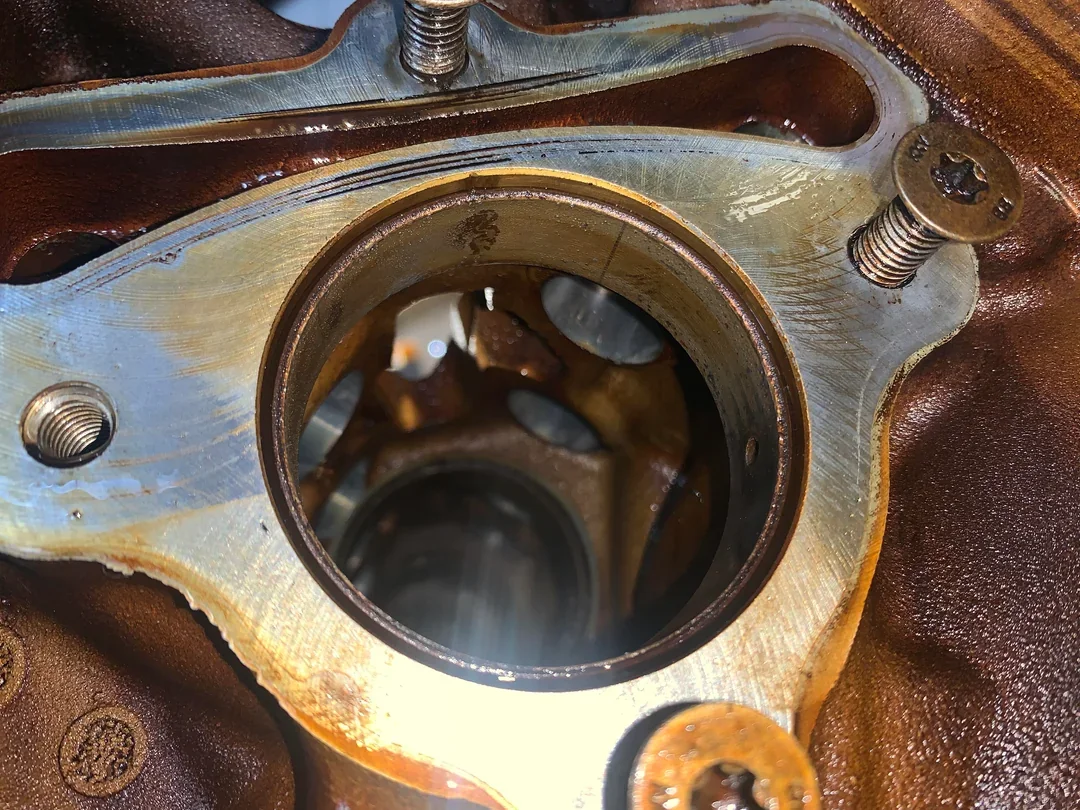Everything wrong with the LS V8
The GM Gen III and Gen IV small-block V8 is celebrated for its compact size, horsepower-producing capabilities, reliability, and robust strength. However, they aren’t without their issues, and anyone wanting to LS swap their ride needs to understand a few hometruths.
I’ve owned 7 LS-powered cars over the last 20 years and worked with these engines professionally for even longer than that. Here’s everything wrong with the LS V8.
A primary engineering vulnerability lies in the stock valvetrain, particularly in engines equipped with Active Fuel Management (AFM) or Displacement on Demand (DOD).
The AFM system utilises specialized hydraulic roller lifters (HRLs) which integrate a spring-loaded locking pin mechanism designed to deactivate the valve. This mechanism is secured via engine oil pressure. The critical flaw is the susceptibility of the locking mechanism components (including the spring, solenoid, and locking pin) to weaken over time and fatigue.
Failure of the pin to lock or unlock cleanly leads to a collapsed roller lifter, causing significant damage to the camshaft lobe. Furthermore, the roller bearings on AFM HRLs are subject to premature fatigue and cage failure, especially under the increased spring pressures and aggressive ramp rates of aftermarket camshafts.
Staying with the valvetrain, the stock rocker arm assembly utilises a cost-effective roller rocker design, which uses loose needle roller bearings. Under conditions of high valve spring pressure (e.g., performance camshaft installs) or frequent high-RPM pulls, or plain high mileage, these small-diameter, non-captured needle bearings are susceptible to axial migration and subsequent disintegration of the bearing cage.
They fall out. Then your engine gets a nice shrapnel bath.
The catastrophic consequence of this failure is the liberation of hardened steel needles into the engine’s oiling system. Aftermarket trunnion upgrade kits, which replaces the needle bearings with more robust, captured roller elements or solid bronze/bushing pivots to eliminate the risk of needle release.
Along with replacing the stock valve springs, which are as strong as stillborn kittens, with quality aftermarket springs, aftermarket trunnion upgrade kits are a near-mandatory first step for anyone owning an LS V8 today.
Harder to remedy are the cam bearing issues on some Gen IV engines, particularly L98 6L. All LS engines employ five shell-type cam bearings that receive pressurised oil via galleys fed from the main oil pump. The No. 4 cam bearing is particularly stressed due to its proximity to the rear oil feed galley, the front-located oil pump, and the windage conditions within the crankcase.
Repeated high-RPM operation can exacerbate localised oil starvation during initial cold start or extended duty cycles, leading to abrasive wear and eventual bearing material spalling. This failure often precipitates a cascading effect, introducing particulate contamination into the main and rod bearings, necessitating full engine disassembly and block line-honing.
Similarly, the stock LS oiling system (particularly the LS1) is generally robust at factory specifications, but exhibits significant shortcomings with high G-force, high-RPM conditions.
Since these engines were new circuit racers have known the OEM oil pan and baffle design (especially in truck and earlier F-Body LS engines), is inadequate for controlling crankshaft windage. At high RPM the oil fog surrounding the rotating assembly is not effectively stripped and drained back to the sump, resulting in significant parasitic loss and, critically, oil aeration.
Aerated oil compromises the hydraulic stability of the HRLs and reduces the film strength across all hydrodynamic bearings, accelerating wear. While aftermarket dry sump systems or improved oil control baffles mitigate this, it highlights a fundamental limitation of the factory wet sump architecture in severe duty cycles.
While the following aren’t outright failures of engine design they’re an important area to pay caution with for anyone working on LS engines today. Head studs, water pump, and exhaust manifold bolts are renowned for snapping when being undone, as the factory went overboard with thread sealant. Pay special caution with the front and rear exhaust studs on each cylinder head
The stock hypereutectic aluminum alloy pistons utilised in most LS engines, while cost-effective and low-expansion, possess inherent limitations under severe operational conditions. As stock non-forged pistons have a relatively high silicon content and a brittle crystal structure, when exposed to detonation (knock) the localised pressure spike exceeds the material's yield strength, resulting in fracture of the top ring land.
Aftermarket pistons and rods are cheap today and, given the age of most second-hand LS engines, they mark cheap insurance for any boosted application. Even then, as enthusiasts get increasingly power-hungry, the limits of the LS platform are laid bare.
Due to the platform’s legendary versatility, demand from the aftermarket and swap community has driven purchase costs for good-quality core engines well beyond their initial market value. This has pushed many people chasing over 1000hp to start with an aftermarket block, like an LSX or Dart, which can then be built specifically for boost and enjoy significant engineering upgrades like 6-bolt heads.




